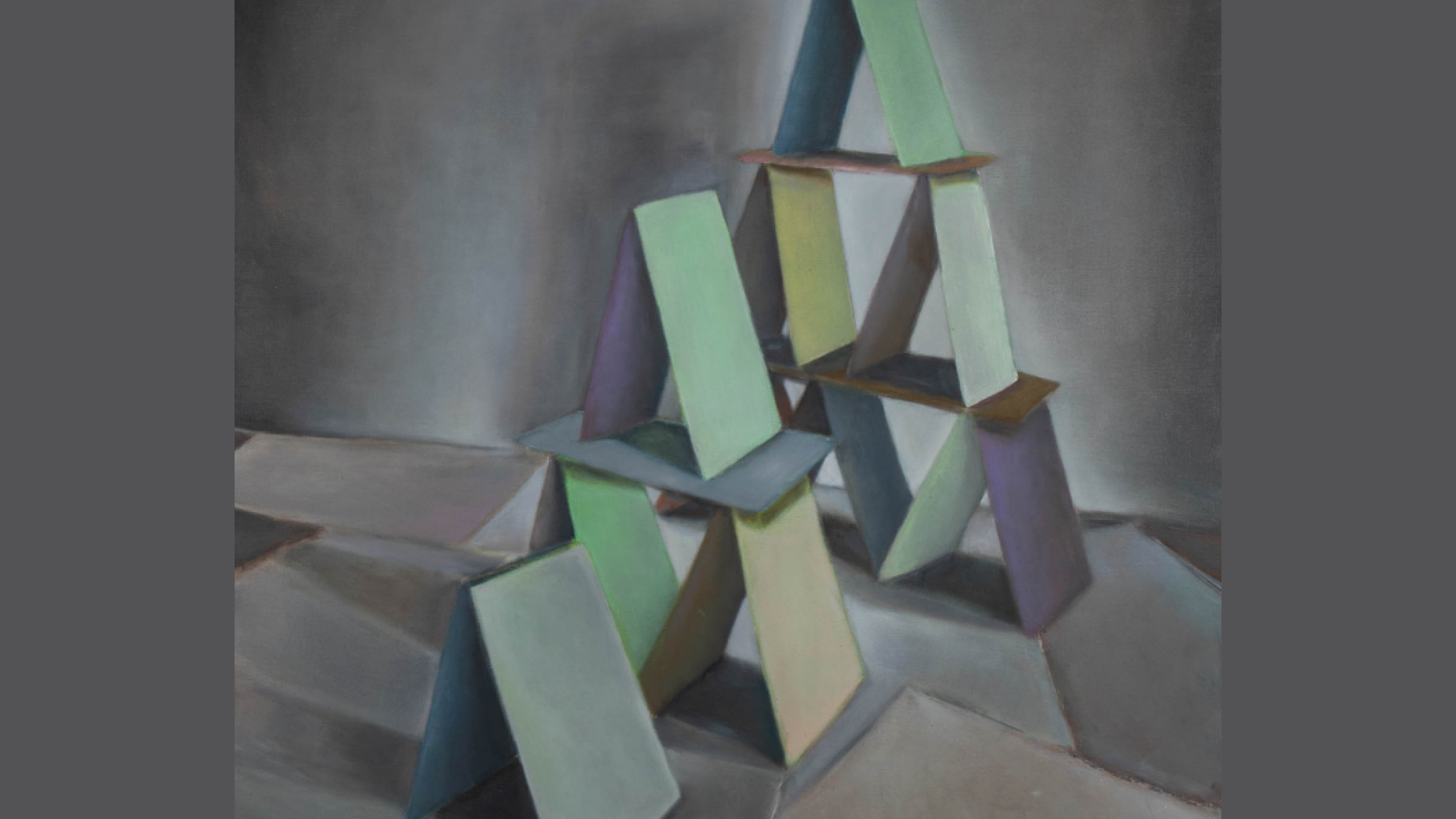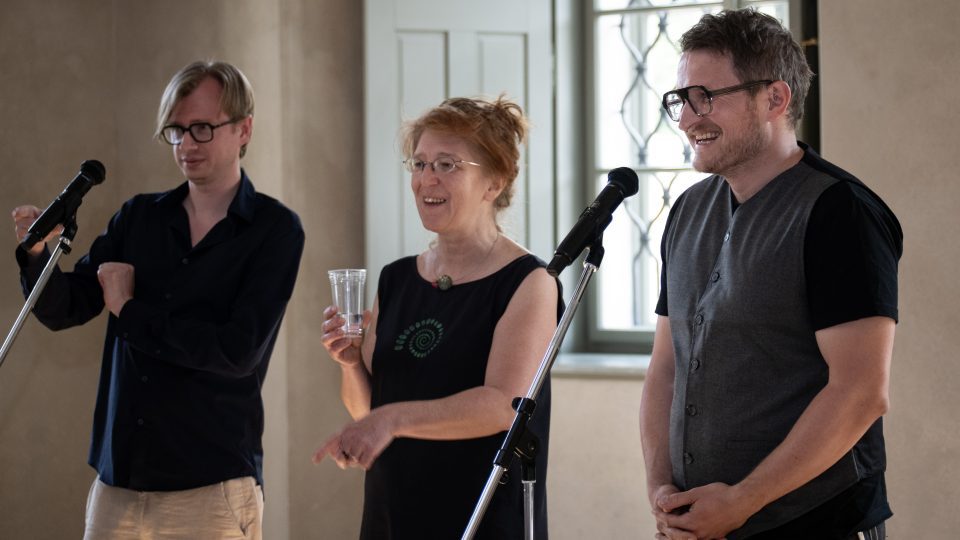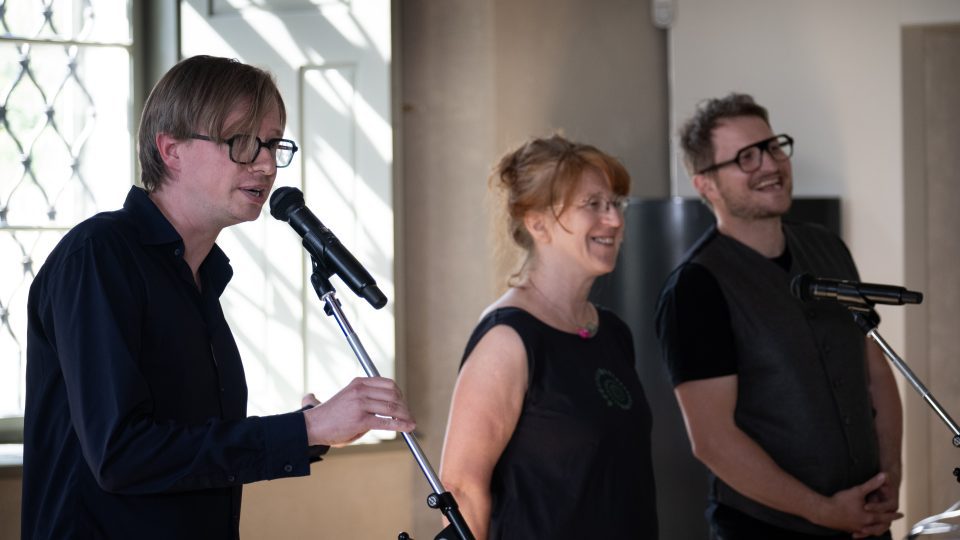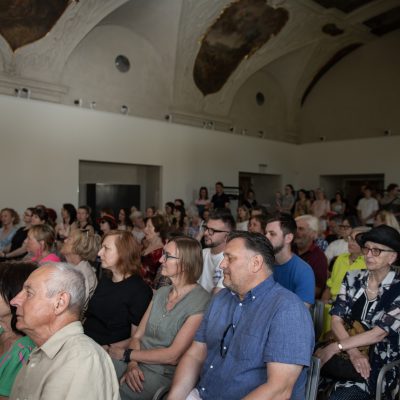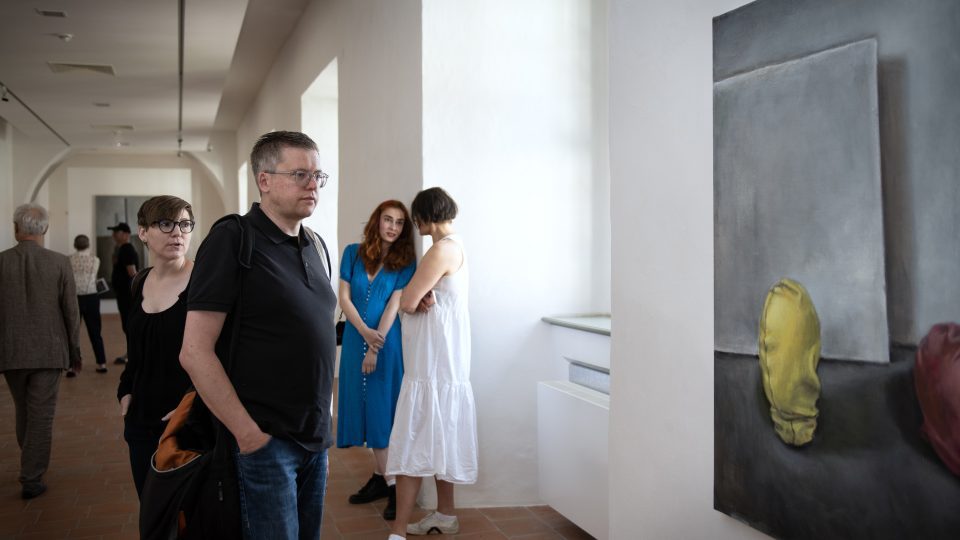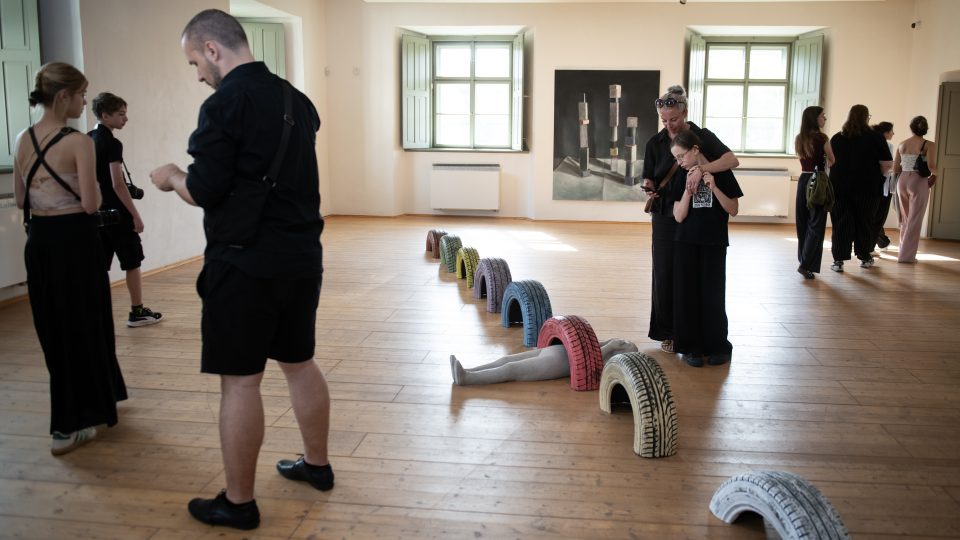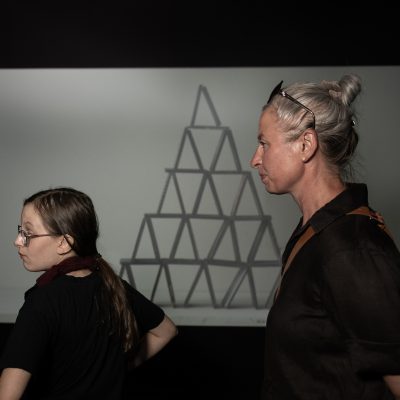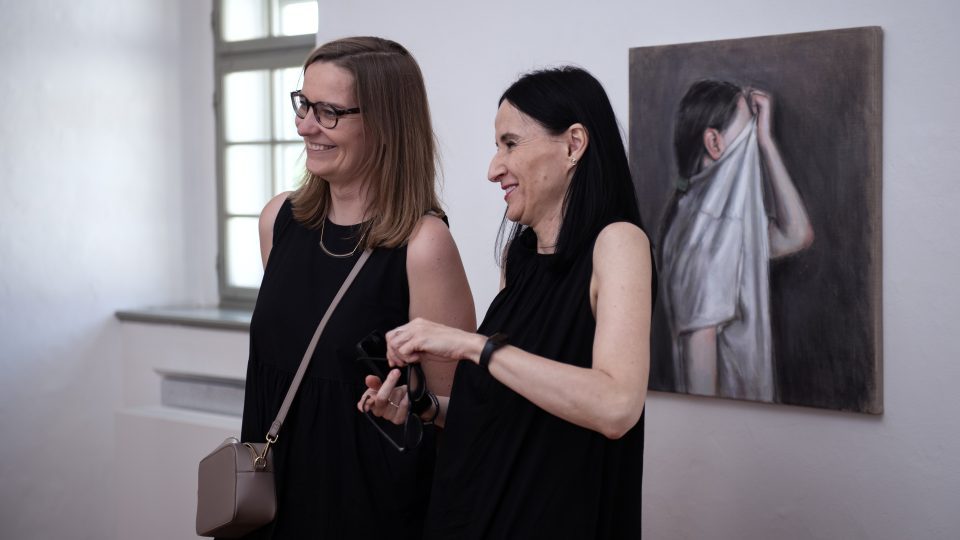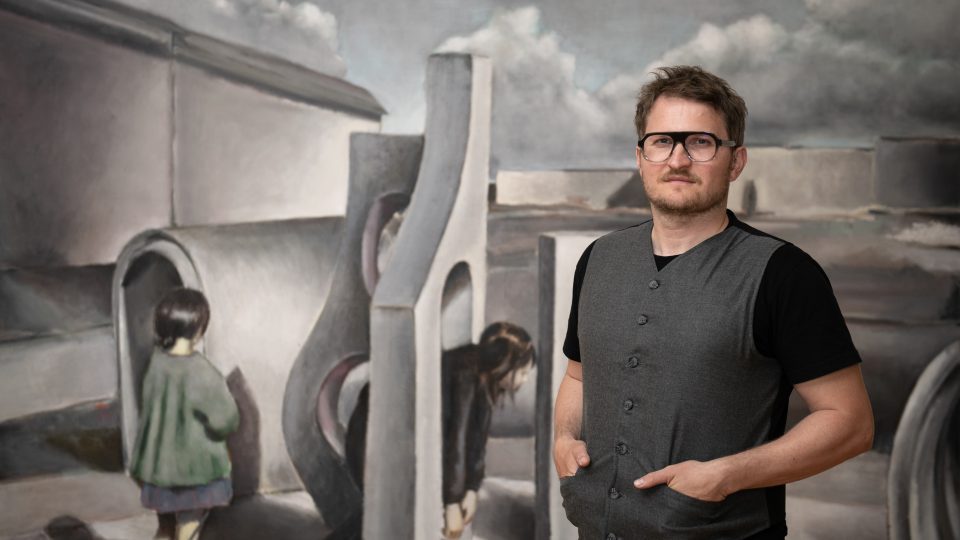The exhibition’s title references two themes common to most of Jakub Janovský’s recent works, still-lifes as well as figure paintings: fragility and the search for balance. Janovský’s House of Cards is a sophisticatedly simple and well-designed building, a carefully composed interplay of surfaces and colours in space, but it is still a structure whose existence can be threatened by the slightest tremor or outside interference. On a symbolic level, it seems to mirror not just elegance and refinement, but also the uncertainty, instability and anxiety of the world today.
House of Cards is part of a line of still-lifes exploring the limits of stability that were inspired by the artist’s long-standing interest in utopian, fictional and temporary buildings. He draws inspiration from the dreams of avant-garde architects, contemporary experiments with various architectural principles and interpretations of basic tectonic relationships, and also from his son’s bold structures made from wooden building blocks. The frozen time of his still-lifes hides a wide range of stories: besides the playfulness and metaphorical nature of towers and houses, Janovský uses building blocks to create models of concentration camps in which the innocence of a child’s construction set contrasts sharply with this reference to a dark era from recent history.
Although the main subject of Janovský’s figure paintings are usually children and children’s games set against the backdrop of communist-era housing estate, they are also dominated by a preserved “other” time or even a kind of timelessness that, combined with their muted colours, makes them feel like fading photographs from a family album. The anonymous nature of the actors, however – their obscured faces or the fact that they are turned away from us – confirms that the artist’s goal is not to idealise the “lost paradise of childhood” or to engage in a simple game of hide-and-seek. Despite the images of children at play, the scenes’ ambiguity combines with the clash of collective memory and suppressed personal memories – but also with childhood traumas emerging from the dark recesses of the mind – to add a sense of tension, anticipation and fascination to the silence of the large-format canvases.
Jakub Janovský’s diverse and multilayered work clearly shows that he is not afraid of contrasts. On the contrary, he sees the ambiguous nature of interpreting and reading a work as a challenge, one to which he often responds with irony or dark humour, but also by increasing the number of seemingly contradictory elements in his work. In his paintings and sculptures, we can clearly feel the predominance of drawing as his initial source of inspiration and the foundation for his artistic expression. His self-contained, almost sculpturally modelled shapes characterised by a highly specific use of muted colours are today a hallmark of his art, a brand associated with this distinctive representative of the middle generation of artists.
——–
Jakub Janovský (1984) first called attention to himself through performative drawn interventions in the public space that he did still a student in Jitka Svobodová’s drawing studio at the Academy of Fine Arts in Prague. Although his art is closely associated with drawing, he refuses to be limited to just one technique. He intensively works with painting, spatial realisations, and the occasional video, but his work also possesses a performative aspect and reflects his interest in public interventions.
Accompanying programme.
On 20th of September at 2:30pm, the gallery will host a guided tour and celebrate publication of the exhibition catalogue. The exhibition’s closing ceremony will take place on 11 October at 4pm.
